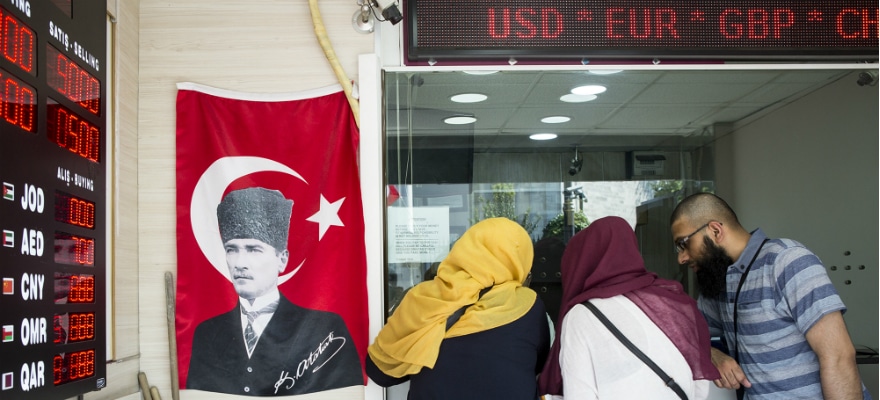August has not only brought the hottest summer weather to Western Europe - for companies dealing with emerging market foreign exchange (EMFX), this month has also been a resilience test. After the Turkish central bank officially lost its independence, as Erdoğan won the presidential election, the Turkish lira went into free fall.

The Turkish lira has had a rough year so far
However the foreign exchange market has handled the difficult market conditions remarkably well, in contrast to how it has responded to other examples of political turmoil in recent years. After speaking exclusively to industry insiders, we can confirm that the main reason for this appears to be the electronification of EMFX trading.
Consistent pricing for EMFX has been an issue for years, which is part of the reason that retail brokers have been reluctant to start offering certain currency pairs to their clients. That said, over the past year, a lot of companies have added the Turkish lira, the Chinese yuan and/or the South African rand to their lists. The lack of turmoil for trading venues and brokers points to a more solid marketplace.
“The market has matured tremendously and despite the massive fluctuations in recent weeks all of our clients have handled the event seamlessly. From our perspective I see our brokers as well situated to handle this from the standpoints of technology, Regulation and organizational maturity,” commented Andrew Ralich, CEO of connectivity provider oneZero.
Institutional EMFX Volumes Hit Summer Records
Two major players in the institutional space shared with Finance Magnates that August has been their busiest summer month in years in terms of EMFX. The CEO of London-based R5FX, Jon Vollemaere, shared with us that this month has been the busiest in the company’s short history.
Highlighting that even he was surprised to see consistent pricing the whole way through the turmoil, Vollemaere emphasized that the long hard job of electronifying EMFX is bearing fruit.
“Access to trading EMFX for banks and buy-side has improved and they also benefit from seeing our core prices which can be used as part of their pricing engine. This gives them more confidence in their prices and they are more willing to trade in volatile markets,” Vollemaere explained.
A similar picture of EMFX trading activity came in from Alan Schwarz, CEO of FXSpotStream. The company saw its busiest summer month when it comes to emerging markets pairs. Schwarz also highlighted that the Volatility and increased risk to certain countries always presents challenges to market participants:
“In addition to the obvious daily currency exposure there’s always counterparty risk that trading parties need to keep in mind. While counterparty risk can’t ever be completely eliminated, knowing who you are trading with helps reduce such risks.”
His take is not accidental; institutional market players have been more active than ever in using disclosed trading channels. Schwarz thinks that this partly explains some of the growth in the company’s trading volumes.
“We expect the continued volatility and counterparty uncertainty to bolster the interest in parties trading on a disclosed basis,” said he.
More Volatility Yet to Come
Industry insiders think that this August is only a hint of what is to come in the coming quarters. Traditionally, the cycle is entering into a phase that is unfavorable for emerging market currencies.
In contrast to other EMFX US rates-driven volatility, this time political factors are at play. The prospective rate hikes from the US Federal Reserve before the end of the year are at the core, but Trump’s tweet-machine might be the biggest driver once more.
“Earlier in the year the discussion was how EM economies are very different to each other and some are better prepared than others for a USD led shock. That's still very true,” commented Vollemaere.
The CEO of Gold-i, Tom Higgins, shared that brokers to whom he spoke share an opinion that TRY pairs are going to continue to be very volatile and the worst is yet to come. Their insight is that the lack of stability and transparency in Turkey is driving business across all sectors away from Turkey, to more predictable markets.
EMFX volatility traditionally goes up in times of political and monetary turmoil. The cycle highs for the US interest rates cycle is typically a catalyst of massive volatility events. With the electronification of the market eliminating a lot of issues related to offering emerging market currencies, brokers have become more comfortable to offer them.
That said, companies in the industry which are working with EMFX are nowhere close to dropping their guard, and continue to vigilantly monitor market conditions.

















